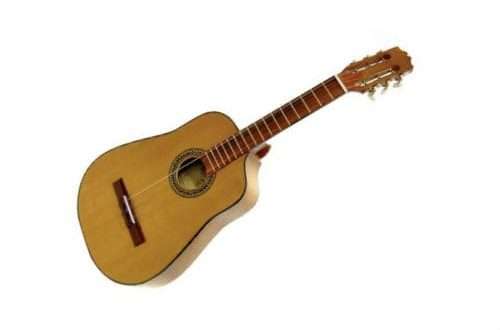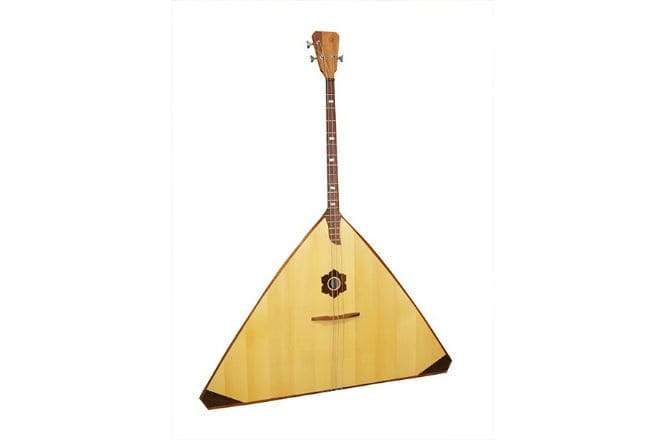
Double bass balalaika: what is it, composition, history of creation
Contents
The balalaika is a folk instrument that has long been associated exclusively with Russia. History has brought some changes to it, today it is represented by various variations. There are five variations in total, the most interesting is the double bass balalaika.
Description of the tool
The double bass balalaika is a plucked musical instrument with three strings. String material – metal, nylon, plastic. Outwardly, it differs from the usual balalaika by its impressive size: it reaches a length of 1,5-1,7 meters. The neck has seventeen frets (rarely sixteen).

This is not only the most gigantic copy among other varieties of balalaikas, it has the most powerful sound, low tone, and plays the role of bass. Indispensable in the orchestra, the ensemble of Russian folk instruments.
The stability of the balalaika-double bass is given by a special spire located at the bottom of the body.
Dimensions and weight
The overall dimensions of the balalaika-double bass are approximately as follows:
- length: 1600-1700 cm;
- base width: 1060-1250 cm;
- the size of the working part of the string: 1100-1180 cm;
- body length: 790-820 cm.
The sizes of concert instruments often differ from the standard: professional musicians make them to order to match their height and physique.
The weight of the balalaika-double bass fluctuates, amounting to 10-30 kg (the material of manufacture, dimensions, and other conditions play a role).
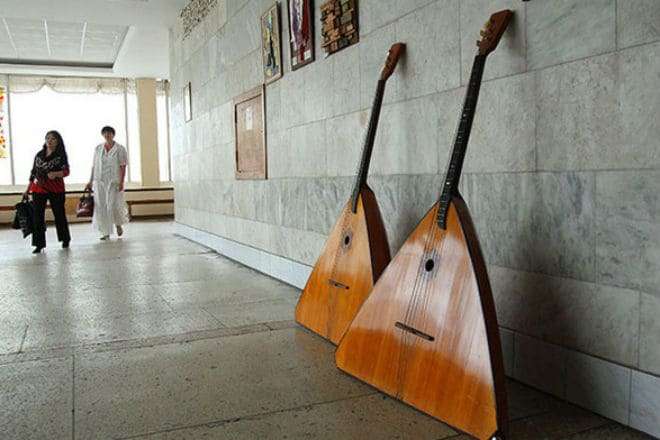
Balalaika-double bass construction
The design of the tool is quite simple, the following components are distinguished:
- body, including soundboard (front, straight part), back part (more rounded, consisting of 5-6 interconnected segments);
- neck attached to the body;
- strings (metal, plastic, nylon, others);
- stand (metal spire), which allows you to adjust the height of the strings, create an additional resonating effect, make the sound more voluminous, long, viscous;
- frets (steel strips stuffed on the body);
- resonator hole located in the middle, which serves to extract sound.
An important part is the mediator – a separate detail, the absence of which will not allow you to start playing music. Professional performers stock up on several options for picks that differ in size, material of manufacture, sharpening angle.
The purpose of the mediator is to extract sounds. The fingers are too weak to master the powerful, heavy strings of the instrument. A rich selection of mediators guarantees the possibility of extracting sounds of various shades, depth, duration, strength. They are leather, carbon fiber, polyethylene, caprolact, bone. Sizes – small, large, medium.
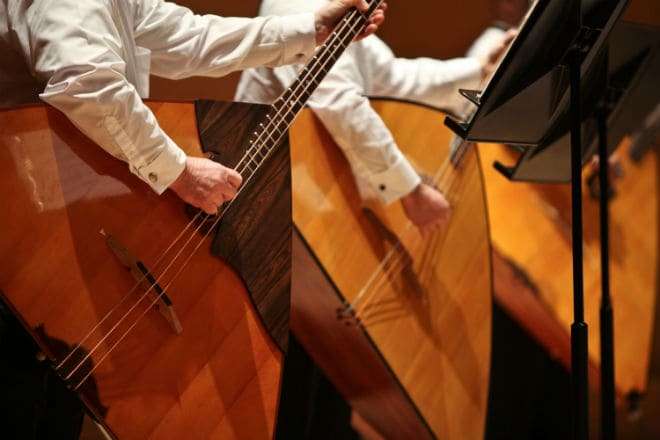
History of creation
Who, when invented the balalaika, is not known for certain. The instrument is called Russian folk, the roots of creation are lost in the distant past. Initially, the instrument spread throughout the villages and villages. He was only interested in people studying history, gravitating towards the roots, trying to get closer to the people.
The next wave of interest in the people’s favorite swept in the XNUMXth century. Dvoryanin V.V. Andreev, who had a passion for balalaikas and mastered the virtuoso Play, decided to improve his favorite instrument, to make it stop being an object of amateur musicians, become professional, and take a worthy position in the orchestra. Andreev experimented with dimensions, material of manufacture. Changing both parameters changed the sound produced by the new generation balalaikas.
Subsequently, Andreev created an ensemble of musicians playing balalaikas of all stripes. The performances of the balalaika group were a huge success, concerts were even held abroad, causing genuine delight of foreigners.
The case of Andreev was continued by the court master designer Franz Paserbsky. The man came to grips with the design of a whole family of balalaikas, improved the range, sound features, and design features. The craftsman shortened the neck, resized the resonant hole, arranged the frets in a special way. Soon, five models known today (prima, second, viola, bass, double bass) became the basis of the orchestra of folk orchestras. Paserbsky patented a line of balalaikas, engaged in the industrial production of folk instruments.
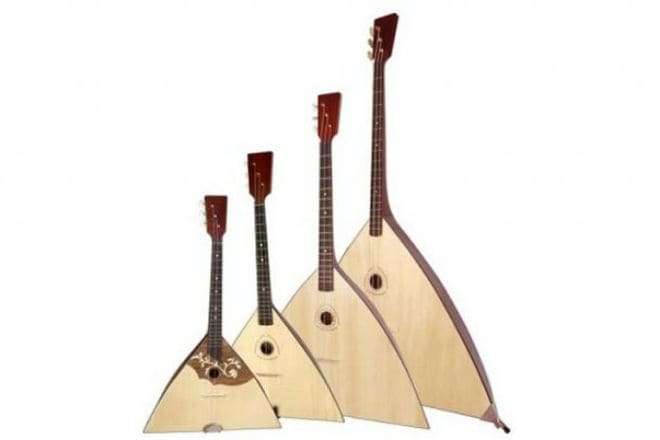
Now the balalaika-double bass is a constant member of the orchestra of folk musical instruments, capable of displaying a lot of sounds thanks to the wide range of possibilities.
sound Features
The instrument has a decent range of sounds. The double bass balalaika has two octaves and three semitones at its disposal. Due to its size, the giant has powerful dynamics, the lowest possible tone among other balalaika varieties.
The sound is extracted with a large leather pick, due to which it becomes deeper, softer, more penetrating, similar to the sound of a bass guitar, double bass, plucking. Sometimes the sounds made by the double bass balalaika are compared with the sounds made by the organ.
Story
The structure of the double bass balalaika is similar to that of the domra. The tone sequence is:
- the first string, the highest tone – the note Re of a large octave;
- the second string is the note La of the counteroctave;
- the third string is the Mi note of the counteroctave.
The fourth system is created by the sound of open strings. Notes for the balalaika-double bass are written an octave higher than the real sound.

The use of a balalaika-double bass
The instrument is difficult to use, not everyone can play the balalaika-double bass – the reason for this is the weight, powerful, thick strings, which are not easy to extract even for a massive plectrum. The musician will need, in addition to knowledge of music, remarkable physical abilities. You have to act with two hands: with one, the strings are strongly pressed against the fretboard, with the second they are struck using a mediator.
More often, a balalaika of impressive size sounds in the composition of folk ensembles, orchestras. This allows the musician to periodically rest, gain strength. In recent years, interest in Russian folk instruments has increased markedly, and the giant construction is found in duets, virtuosos have appeared who are ready to work solo.
Musicians who specialize in balalaika-double bass play in a standing or sitting position. Due to the serious size of the instrument, it is much more convenient to extract sound while standing nearby. The soloist always plays while standing. A member of the orchestra, who owns a balalaika-double bass, takes a sitting position.
The passion for folk instruments will never end. People constantly return to the roots, strive to learn folk traditions, customs, culture. Balalaika-double bass is an interesting, complex subject, worthy of study, admiration, pride.





